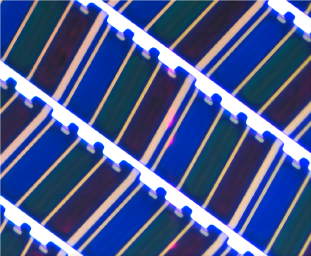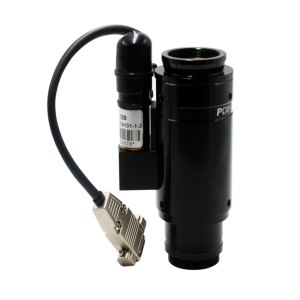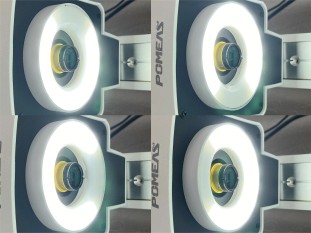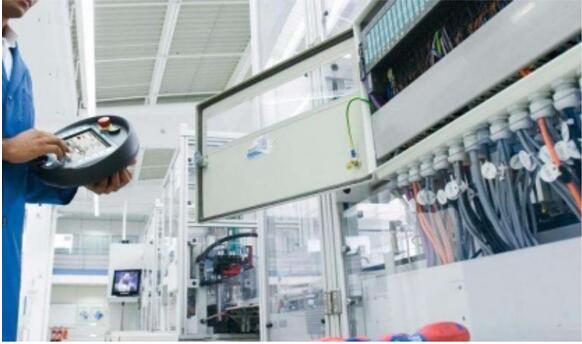Encyclopedia of motorized zoom autofocus microscopes (autofocus microscopes)
In many fields such as scientific research and industrial production, microscope is a key tool to explore the microscopic world. The emergence of motorized zoom autofocus microscope (autofocus microscope system) has brought unprecedented convenience and efficiency for microscopic observation.


I. Autofocus: pinpointing the microscopic world


Autofocus technology is one of the core features of this microscope system. During the use of traditional microscopes, it is necessary to manually rotate the focusing knob to adjust the distance between the objective lens and the sample in order to obtain a clear image. This process is not only time-consuming, but also requires a high level of operator experience and skill. The autofocus function, on the other hand, with the help of advanced sensors and intelligent algorithms, can quickly and accurately detect the height information of the sample and automatically adjust the position of the objective lens, so that the sample instantly presents a clear imaging effect. For example, in biomedical research, when observing cell slices, the autofocus function can focus clearly on different levels of cell structures in a short period of time, which greatly improves the research efficiency and reduces possible misjudgments due to inaccurate manual focusing.
II. Motorized zoom lens: magnification switching at will


Motorized zoom lenses provide powerful magnification switching capability for microscopes. In the past, common microscopes used to adjust the magnification by changing the objective lens, which is cumbersome and easy to introduce dust and other impurities during the replacement process, affecting the imaging quality and instrument life. Motorized zoom lenses, on the other hand, allow users to achieve continuous magnification changes within a certain magnification range through simple motorized operation. For example, in the field of electronic chip inspection, engineers can quickly switch from low magnification to high magnification to comprehensively observe the overall layout of the chip to the microscopic circuit structure, without the need to frequently change the objective lens, which not only saves time, but also ensures the stability and accuracy of the inspection process. This convenient mode of magnification switching enables the microscope to better adapt to observation tasks of different sizes and precision requirements, greatly expanding its scope of application.
III. Light source zoning adjustment: illuminate the microscopic dead space


This POMEAS motorized zoom autofocus microscope is also equipped with a light source zoning adjustment function. In micro-observation, some special shapes or complex structures often have monitoring dead zones, and the traditional single light source is difficult to evenly illuminate the entire observation area, resulting in some details not being clearly presented. The light source zoning adjustment function can be based on the specific shape of the sample and observation needs, the brightness of different areas of the light source for independent adjustment. For example, when observing metal parts with concave-convex texture, by adjusting the light source zones, the depth and details of the texture can be highlighted, so that the microscopic features that were originally hidden in the shadows can be clearly seen, thus helping the customer to observe the details of the product in a more comprehensive and in-depth manner, and to ensure the accuracy of product quality control.
This microscope has a wide range of applications in several fields:
1、In the electronics manufacturing industry, it can be used to detect line defects in circuit boards and microstructural defects in chips;
2、In the field of biomedicine, to help cell research, pathology section analysis;
3、In material science, it can observe the crystal structure and microstructure changes of materials;
4、In precision machining, it can detect and evaluate the machining accuracy and surface roughness of tiny parts.
Product recommendation
TECHNICAL SOLUTION
MORE+You may also be interested in the following information
FREE CONSULTING SERVICE
Let’s help you to find the right solution for your project!


 ASK POMEAS
ASK POMEAS  PRICE INQUIRY
PRICE INQUIRY  REQUEST DEMO/TEST
REQUEST DEMO/TEST  FREE TRIAL UNIT
FREE TRIAL UNIT  ACCURATE SELECTION
ACCURATE SELECTION  ADDRESS
ADDRESS Tel:+ 86-0769-2266 0867
Tel:+ 86-0769-2266 0867 Fax:+ 86-0769-2266 0867
Fax:+ 86-0769-2266 0867 E-mail:marketing@pomeas.com
E-mail:marketing@pomeas.com
